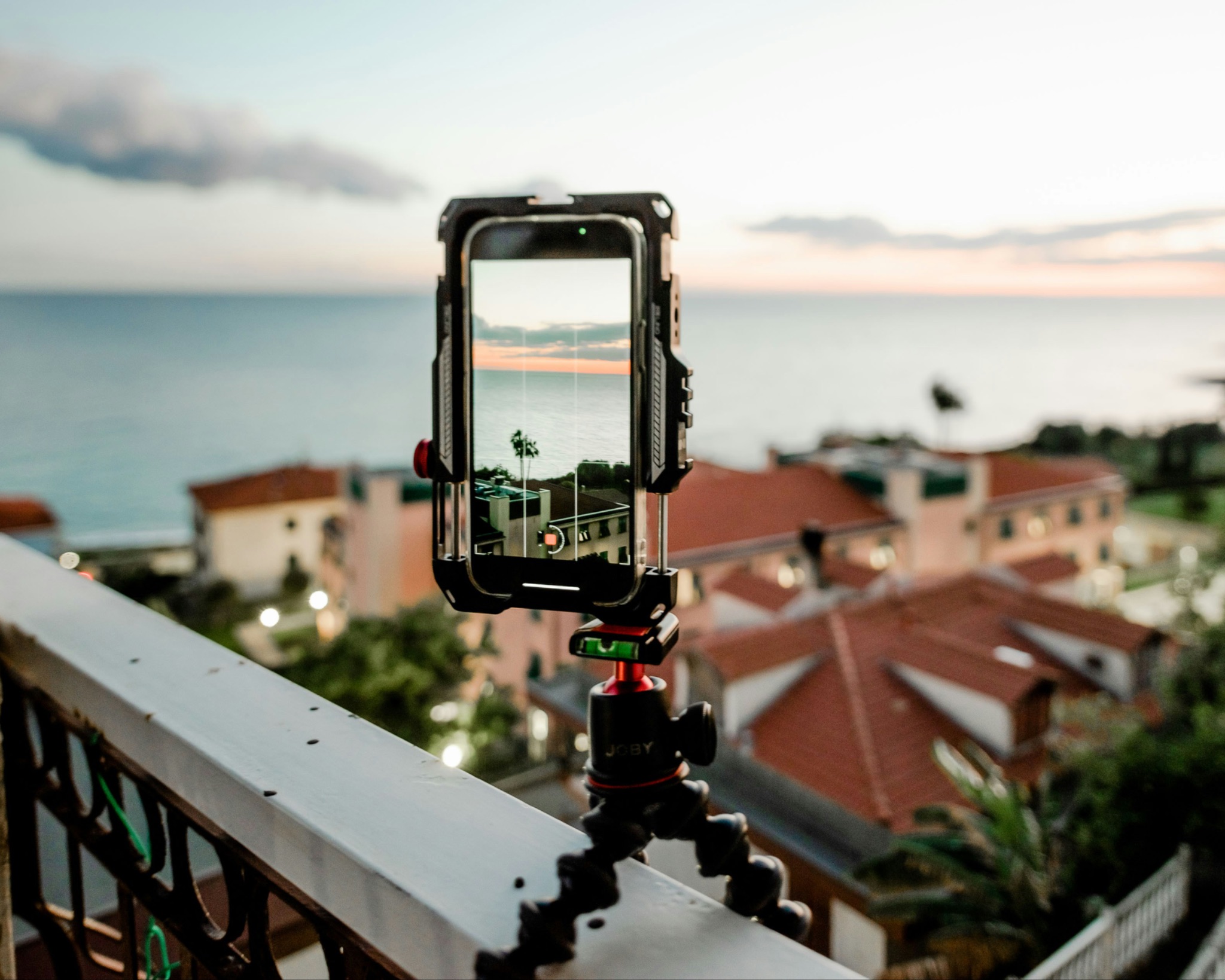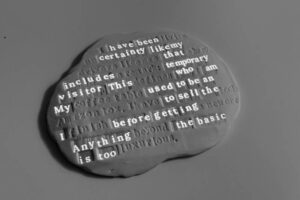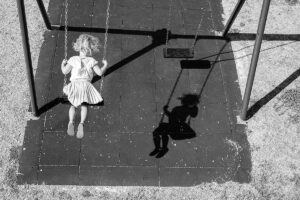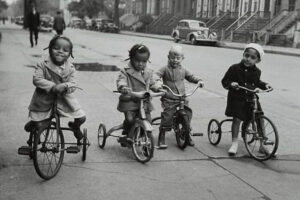
Urban landscape photography is all about taking the chaotic complexity of a city and turning it into well-ordered, beautiful compositions. But if you’re just a beginner – or even if you’re a more experienced city shooter – you may struggle to get solid results. After all, cities are often messy, unstructured, and full of movement; how are you, as a photographer, supposed to isolate just the right elements to create pleasing frames?
Fortunately, successfully photographing urban landscapes isn’t as hard as it might initially seem. Yes, cities are chaotic, but with the right approach, it’s possible to create breathtaking images no matter where you live. You simply need to understand a few key facts about lighting, composition, and creative techniques.
I’m a veteran urban photographer, and in this article, I share my best city landscape advice, covering long exposure techniques, urban night photography, urban architectural photography, and more.
So if you’re ready to start producing the kind of shots that do your favorite metropolitan areas justice, then let’s get started.
What is urban landscape photography?
Urban landscape photography, at its broadest, involves capturing photos of cities and towns. Generally speaking, an urban landscape shot has a more expansive field of view – capturing more than just a single subject – and is taken outdoors.
 An urban landscape photograph, taken in the early evening from a rooftop looking back toward the city.
An urban landscape photograph, taken in the early evening from a rooftop looking back toward the city.As you can imagine, cities, especially bustling metropolises, are popular photo locations. In fact, if you travel frequently, then you’ve probably taken an urban landscape or two without realizing it, perhaps from an observation deck or a lookout point. Sometimes, this type of photo is called a cityscape or a city landscape, but it’s also referred to as an urban landscape.
Of course, it’s also possible to capture urban landscapes in much more subdued locations. Photos of small cities or even towns still fall under the umbrella of urban landscape photography, so if you like the idea of shooting urban landscapes but you don’t live near a major metropolitan area, you’re still in great shape.
Now that you’re familiar with city landscape shooting and what it’s all about, let’s take a look at how to get great images, starting with my first tip:
1. Use a wide-angle lens
If you want to capture the kind of urban landscapes that showcase entire skylines and sweeping street scenes, then I highly recommend using a wide-angle lens. It’s a simple tip, but it’s a critical one, too; without a wide-angle lens, you’ll struggle to create those expansive, breathtaking shots that urban landscape photographers love.
Fortunately, wide-angle lenses tend to be far cheaper than telephoto lenses. Most kit lenses (such as the standard 18-55mm glass) contain wide-angle focal lengths, and if you’re looking for better image quality, you can grab a nice 24-70mm or 16-35mm lens for a reasonable price (you can also save some money by purchasing a 24mm or 35mm prime).
Since there’s no one-size-fits-all approach, feel free to experiment with different focal lengths, though anything wider than 35mm is a good starting point!
2. Photograph with a narrow aperture
A narrow aperture will result in a deep depth of field, while a wide aperture will result in a shallow depth of field. In other words, by using a narrow aperture, you’ll be able to include a greater band of sharpness within the frame (so that both foreground and background elements are rendered in sharp focus) – and by using a wide aperture, you’ll blur the background (so that only your main subject will be sharp).
Some photographers do enjoy using a wider aperture to create a blurred-background effect. But while such an approach can be effective, if you’re after beautiful scene-setting shots, it’s generally best to keep the entire photo in focus from the nearest foreground element to the most distant building in the background – and that’s where a narrow aperture comes in handy.
 A narrow aperture kept this entire scene in focus.
A narrow aperture kept this entire scene in focus.Unfortunately, I can’t give specific aperture recommendations to keep your shots sharp; the depth of field will change depending on your distance from the subject and the lens focal length. But f/8 is a good starting point for standard photos, and if you’re capturing a particularly deep scene (i.e., a scene with very close foreground elements and very distant background elements), you might want to push this out to f/11, f/13, and beyond.
One tip is to shoot using a reasonably narrow aperture, then check the shot on your camera LCD. Zoom in, then analyze foreground and background sharpness. If the photo is in focus, then you can move on – but if not, simply narrow your aperture and shoot again.
3. Take advantage of golden-hour light
Different types of light can dramatically transform the urban landscape, and while no one form of light is fundamentally superior, golden-hour light – that is, the light just after sunrise and just before sunset – can look really, really amazing.
Golden-hour light is soft and warm, plus it casts long shadows, which means that it’ll often create wonderfully ethereal scenes. And because the sun will be low in the sky, by changing your position relative to your subject, you can create a variety of images: sculpted side-lit shots, silhouetted backlit shots, and detailed front-lit shots.
Make sure you pay careful attention to your exposure settings as you shoot, and regularly check your images on your camera’s LCD. The rising or setting sun can move fast, and you don’t want to accidentally overexpose or underexpose your shots simply because you forgot to adjust your settings.
Of course, just because golden-hour light is great doesn’t mean you should neglect other lighting scenarios. You can create interesting high-contrast shots at midday, while stormy weather can provide plenty of atmosphere.
4. Shoot street photos in context
Street photography can fall into two categories:
- Street portraits
- More environmental street compositions
While street portraits don’t work great for urban landscape photography – they’re a bit too focused on a single subject – environmental street shots often make fantastic urban landscapes. And by thinking carefully about showing street scenes in context, you can capture some beautiful urban shots.
Here’s what I mean by this: As you’re out shooting, look for scenes with people, but place them in their environment. The goal is to provide context: where the people are and what is happening. For instance, you might photograph a group of people shopping, surrounded by advertisements and window displays. Or you might photograph a single person sitting alone on a bench at the edge of the city.
 A street scene showing the landscape and what people are doing in it.
A street scene showing the landscape and what people are doing in it.One technique here is to identify a picturesque location, such as a street lined with old buildings, set up your composition, then wait. Eventually, you’ll get some interesting passersby walking through your frame, and you can press the shutter button at the perfect time.
Basically, anywhere that people hang out can result in interesting urban landscape photography. Just make sure you do more than shoot close-up portraits. In city landscape shooting, showing the environment is key.
5. Photograph from above
Images taken from high vantage points have the power to shock and amaze – especially when tall buildings are involved. These photos often show off rarely appreciated views, such as interesting rooftops and street grids, and you can use them to display architecture from unique angles, too.
So I highly recommend elevating yourself whenever possible.
But how do you shoot from above? These days, there are quite a few ways to capture aerial-type city shots. Some areas allow drone photography, which is a great way to capture unique, never-before-seen perspectives (though before you start flying a drone in your favorite shooting location, make sure to check for any flight regulations – you don’t want to cause problems or get in trouble).
Alternatively, you can try photographing from observation decks, which often offer great views. They’re not always easy to shoot from – you sometimes have to work through glass or fencing – but if you can make it work for you, the results will be breathtaking.
(Pro tip: Before heading to an observation deck, especially if you’ll be shooting in the evening or nighttime, call and ask about tripod rules. A tripod can often be the difference between a great shot and a blurry one!)
Finally, you might consider shooting from rooftops. High buildings work, assuming you can get access, but my personal favorite “organic” high vantage points are parking garages, which often provide gorgeous views and plenty of shooting flexibility. Do be aware of parking garage restrictions, though; not every garage is open to the public, so when in doubt, call the garage owner in advance to prevent issues on the day of your shoot.
 A view from above! This was taken from the Melbourne Skydeck, an observation deck looking out over Melbourne.
A view from above! This was taken from the Melbourne Skydeck, an observation deck looking out over Melbourne.6. Have fun with long exposures
Long-exposure photos are nearly always stunning – and they look especially gorgeous when combined with dizzying views of buildings, gleaming glass facades, and other cityside delights.
So the next time you’re out, aim to capture some long exposures. You can feature single buildings as subjects, you can focus on skylines, or you can even shoot busy city streets (that way, you can capture some artistic blur as people walk by!). Whenever possible, try to include water or fast-moving clouds in your compositions. You’ll come away with ethereal results:
 A long exposure of Melbourne taken across the river.
A long exposure of Melbourne taken across the river.In fact, if your city of choice is on a river, lake, bay, or ocean, I highly recommend planning a photoshoot or two around these features!
Note: Long-exposure photography works just like normal photography, except you’ll need to use a lengthy shutter speed (usually between 10 seconds and an hour), and you’ll need to mount your camera on a tripod to keep it from shaking during the exposure. I’d recommend experimenting with your camera’s Bulb mode, which is designed to help you drag out that shutter speed, and I’d also encourage you to grab a high-quality neutral-density filter.
Technically, you can use long-exposure techniques without an ND filter, but it’ll block out the light so you can use shutter speeds between 30 seconds and several minutes even in brighter conditions; that way, you’ll capture beautiful streaking clouds while blurring out people and cars.
7. Shoot urban landscapes at night (including light trails!)
If you’re looking for unique urban landscape shots, then in addition to shooting at sunrise and sunset, I’d also encourage you to photograph the city after dark.
You see, urban environments look gorgeous when the sun goes down. The lights come on, the car headlights gleam, building windows light up, and all sorts of photographic opportunities present themselves.
You will need a tripod, and you’ll generally be forced to shoot long exposures (especially if you want to keep your aperture relatively narrow and your ISO low). Of course, as I discussed above, long-exposure techniques will often enhance your images, so this can actually be a major benefit of night photography. On a related note, if your goal is to create long exposures, you may not need a neutral density filter when shooting at night; depending on how bright or dim it is, you may be able to photograph at shutter speeds of a minute, two minutes, or longer.
You can also get great light trails at night. Look for streets that have some nice buildings in the background, lower that shutter speed, then photograph for several minutes while the cars stream by.

8. Feature interesting architecture
Every city strives to showcase interesting buildings. After all, interesting buildings attract attention, and more attention leads to a thriving metropolis.
Therefore, instead of simply wandering around with your camera, seek out the most beautiful structures in your city to shoot. You might try taking a walk through the area on a bad-weather day, or you could spend some time doing research online. Google Maps can be a big help, too.
By the way, if it interests you, try researching why a building was designed for an area and find out if there’s something special and unique about it. This might provide inspiration for images (plus it can make the actual photography much more fun!).
 One of the most distinctive buildings in Melbourne, Flinders Street station.
One of the most distinctive buildings in Melbourne, Flinders Street station.You can capture telephoto cityscapes that highlight architectural details, or you can go wide and show buildings of interest in context.
One tip here is to look for buildings that are nestled in with others yet are the odd ones out (e.g., an old building that is surrounded by new ones). Scenes like that can provide your images with lots of interest!
9. Head back during different seasons (and weather)
People often forget how a city or town can look completely different depending on the season and the weather.
Of course, if you only travel to a place once, you don’t get a lot of choices. But if you live nearby or visit the location often, then you have the opportunity to experience a wide variety of conditions – which can give rise to a wide variety of shots!
Throughout the year, changing seasons will give you numerous opportunities to capture unique scenes. Autumn has breathtaking colors, so trees in the streets and parks can add interesting flashes of red and gold. Winter will come with people bundled up against the cold as well as empty public places. In summer, folks will wear lighter, happier clothing, and the streets will be filled with people.
And think about the weather, too. Rain, hail, sun, snow – each will give your urban landscapes a different look. Photos of cities that are white from the snow can be magical. Rain will create reflective surfaces and make the city look bigger and shinier. You can’t control the weather, but you can take advantage of it!
So consider what type of photos you want, then choose the season and weather accordingly. And if you can, come back often. It can even be fun to capture the same composition several times throughout the year!
10. Use leading lines
Cities look beautiful on their own, but your goal as a photographer should be about more than just capturing that beauty; instead, you should aim to create something artistic.
That’s why it’s important to understand basic compositional concepts. I’d recommend reading up on the rule of thirds, symmetry, and the rule of odds – but the most important technique here is called leading lines, which are simply lines that move the eye through the image, from one area to another. Leading lines tend to start in the foreground and cruise (or zig-zag) toward the background, and they’re a great way to engage the viewer while also adding three-dimensionality to your photos.
But what can you use as a leading line? Honestly, pretty much anything line-shaped, but here are a few of my favorites:
- Bridges
- Streets
- Street lamps
- Building edges
- People
- Outstretched arms
- Street signs
- Train tracks
- Buses
- Cars
Really, anything that will lead people around an image will work. And you don’t have to rely on stationary elements; you can always use light trails from cars or even clouds blurring across the sky to direct the viewer around a photo. Don’t be afraid to get creative!
 I used the bridge as a leading line to take you into early-morning Melbourne.
I used the bridge as a leading line to take you into early-morning Melbourne.Pro tip: When working with leading lines, try to identify the main subject in your photo (generally a building or skyline in the background), and see if you can incorporate lines that lead the viewer toward that element. You want your leading lines to work with the rest of the composition, not against it.
11. Include negative space
Negative space refers to areas of emptiness within the frame, such as a blank stretch of sky, water, or even a smooth building facade. And while it can be tempting to try to eliminate negative space from cityscape shots in order to incorporate as many interesting elements as possible into the composition, it’s actually good practice to include some of these empty areas in each frame.
Why? Negative space is a way to give the viewer breathing room – to give them a break from all of the powerful and eye-catching objects you’ve incorporated into your shot. Negative space can also help establish flow and rhythm, as the viewer’s eye leaps from one portion of the shot to the next.
So when you’re out shooting, don’t feel like you need to get rid of empty portions of the frame. Instead, carefully mix negative and positive space for a compelling final result.
12. Post-process your urban landscapes
Once you’ve captured your landscape shots, you may be tempted to immediately upload them to social media or your portfolio website – but if you want your photos to look refined and professional, it’s important to spend a bit of time in the digital darkroom.
Import each urban shot into your favorite editing program, then do a bit of color and tonal correction. Make sure the white balance is set to eliminate unwanted color casts and ensure that shadows and highlights have plenty of detail.
Next, try adding a color grade by applying a different hue to the highlights and shadows. (Orange highlights and blue shadows are a great starting point!) I’d also recommend adding a subtle vignette to push the viewer’s eye toward the center of the frame.
Once you become a more experienced editor, you might also consider doing some selective dodging and burning with a brush, and you might try processing the sky separately from the buildings and foreground features to ensure a solid balance between the lighter and darker tones.
Urban landscape photography: final words
You don’t have to follow all of these tips, but memorizing a few will certainly take your urban landscape photography to the next level. And don’t forget to spend that extra time post-processing at the end; it may not seem like it now, but it can make a huge difference.
So head out into the city, look for some beautiful subjects, and have fun!
Now over to you:
Which of these tips do you plan to try out first? Do you have any city landscape tips of your own? Share them in the comments below!
GENERAL
PREPARATION
SETTINGS
LIGHTING
COMPOSITION
GEAR
ADVANCED GUIDES
7 Tips for Urban Landscape Photography
CREATIVE TECHNIQUES
POST-PROCESSING
BUSINESS
INSPIRATION
OPINION










 English (US) ·
English (US) ·